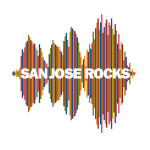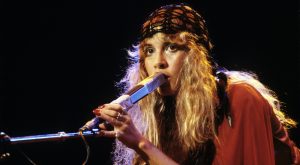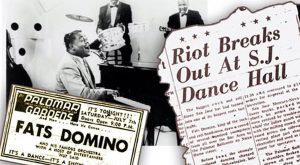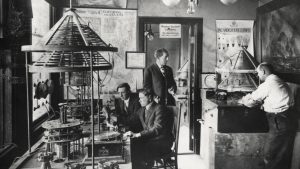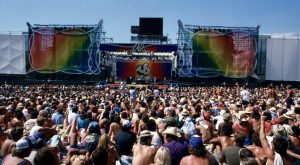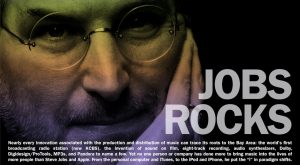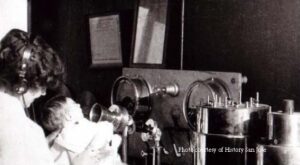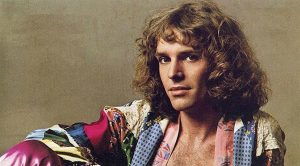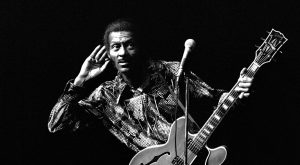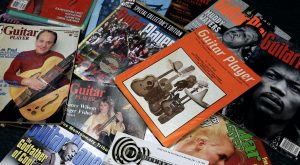Unraveling The History Of The First Grateful Dead Show.
The band’s members began their musical journey largely in the South Bay – leading epically to their first show under the “Grateful Dead” name at a house in downtown San Jose.
By Mark Purdy, August 2021
The Grateful Dead are thought of as a San Francisco band. That was certainly true after 1966 when the group planted itself in Haight-Ashbury and occupied a “band house” there. But before then? The band’s members began their musical journey largely in the South Bay – leading epically to their first show under the “Grateful Dead” name at a house in downtown San Jose.
In that regard, here are the bullet points that document all of that history and all of those connections to San Jose and Santa Clara County:
- SUMMER OF 1962 – Local guitarist Jerry Garcia begins hanging out at Swain’s Music Store on University Avenue in downtown Palo Alto and buys picks and strings to start playing acoustic guitar with the ambition of one day performing at St. Michael’s Alley down the street at 436 University. St. Michael’s Alley opened in 1959 as a bohemian hangout and helped launch the career of another local musician, Joan Baez. The club’s owner, Vernon Gates, eventually does give Garcia a chance. He sits inside the front door of the club, playing a banjo to help lure people inside. “Jerry used to come in, nurse one cup of coffee all day and pick up all the chicks,” Gates says. (SOURCE: “PSYCHEDELIC PALO ALTO,” by Blair Tindall, Palo Alto Weekly, Mar. 8, 2000)
- MAY 1963 – Jerry Garcia and his new wife, Sara, play their first gig at the Top Of The Tangent, a club located above a deli at 117 University Avenue in Palo Alto, across the railroad tracks from the Stanford campus. The folk club becomes a regular performance spot for Garcia in various bluegrass groups. One of the regular audience members is teenager Bob Weir, an aspiring musician from nearby Atherton. (SOURCE: “Lost Live Dead” web page.)
- SUMMER OF 1963 — Mother McCree’s Uptown Jug Champions, an acoustic gaggle of folks that includes Garcia, Weir and Ron “Pigpen” McKernan, begins playing a regular gig at The Offstage at 970 South First St. in San Jose. The Offstage is a dingy coffee house with burlap walls and a small performance space. But it’s a welcoming spot for an emerging counterculture. Garcia and his bluegrass bunch even take a bus trip with San Jose State students to a SJS football game in Oregon because a “hootenanny battle” between groups is scheduled for after the game. The Jug Champions have a revolving lineup that can get fractious. “But it was always Garcia who would patch up the ego spats and persuade them back together,” Foster writes in his memoir, describing the future Dead guitarist as “incessantly driven” and “master of warm heartfelt moodiness with a towering intellect.” Foster also writes that he and Pigpen “were interested in the same girl” who hangs around the Offstage but she turns out to be “a smart cookie who estimated the whole situation and married a doctor.” At the time, Pigpen is only 17 years old, so Foster has to buy his booze, which Pigpen needs to consume before taking the stage because he is so shy. At some point, Palo Alto drummer Bill Kreutzmann and College Of San Mateo student Phil Lesh join the crew and they call themselves “The Warlocks.” (SOURCES: “The Answer Is Always Yes,” by Paul Foster, The Spartan Daily campus newspaper of San Jose State)
- DECEMBER 4, 1965 – Ken Kesey, the LSD experimenter and author of “One Flew Over The Cuckoo’s Nest” as a Stanford graduate student, decides to hold one of his first “Acid Tests” in a home at 43 South Fifth Street in San Jose. He needs a band. He asks his Palo Alto pals, who just recently re-named themselves “The Grateful Dead,” to play the gig. The date and location are picked largely because it coincides with a concert by The Rolling Stones taking place the same night at San Jose Civic Auditorium, just eight blocks away. Kesey manages to rent the house for the night from “Big Nig,” the African-American landlord. Kesey then stations some of his “Pranksters” on the steps of the Civic Auditorium, where they pass out 700 hand-written invitations for those leaving the Stones show to attend the nearby “Acid Test.” A flyer promoting the Dec. 4 acid test.
Bill Wyman, the Stones’ bassist, later writes in his biography that band members Keith Richards and Brian Jones decide to show up for the big event on Fifth Street, though Richards says he doesn’t remember it. What is known: As meticulously described in Tom Wolfe’s book, “The Electric Kool-Aid Acid Test,” the Dead set up in two adjoining rooms amidst a tangle of wires and speakers and proceed to freak out the attendees until 3 a.m. The long, strange trip has officially begun. (SOURCES: “THE ELECTRIC KOOL-AID ACID TEST” by Tom Wolfe. “THE ANSWER IS ALWAYS YES,” by Paul Foster, who attended the party. Email from Rick Dodgson, Prankster historian. Email from Ronald Cook, owner of Coog Instruments in Santa Cruz, who lived in the 43 South Fifth Street house.)
- 1966-2002 — Cook says that after its infamous hosting of the first Dead show, the home at 43 South Fifth acquired the nickname of the “High House” and became headquarters for the San Jose State chapter of the Students For A Democratic Society (SDS) as well as a rehearsal space for Cook’s band, Throckmorton. Cook recalls jamming at the house with Moby Grape guitarist/singer Skip Spence and Doobie Brothers Pat Simmons and Ty Porter. The landlords eventually evict the SDS (and Throckmorton) and turn the home back into more conventional off-campus student housing. But in the late 1990s, San Jose acquires property to build a new downtown city hall and the house sits squarely in the path of the wrecking ball. (SOURCES: Email from Ronald Cook and San Jose Redevelopment Agency records.)
- 2003 — Fortunately, preservationists help arrange for several houses on the site to be saved and moved to other locations. Jim Salata, owner of Garden City Construction in San Jose and an avid preservationist, becomes involved in moving the houses to other lots around the downtown area. Salata is unaware of the house’s history, as is the city’s Redevelopment Agency, according to director of project management Bill Ekern. But after the Grateful Dead/Acid Test house is moved a mile away to 635 St. James St., Jim Salas and his wife, Krista, buy it and begin restoration work. The new San Jose City Hall opens in October of 2005. The site of the historic first Grateful Dead show sits roughly under the current city council meeting chambers. The actual house remains standing and restored at 635 St. James Street. (SOURCES: Emails and interviews with Bill Ekern, Jim Salata and Krista Salas)
Related Stories
How San Jose Became Dead First — And Hosted The Band’s Debut Performance
About Mark Purdy

Mark Purdy spent 43 years as a sports reporter and columnist for the San Jose Mercury News, Los Angeles Times, Cincinnati Enquirer and Chicago Tribune. But in addition to covering 14 Olympic Games and 34 Super Bowls, he also wrote stories or news columns about politics, music and food. He had lunch with Muhammad Ali, played golf with Neil Armstrong and discussed baseball with Alice Cooper. Since his 2017 retirement from the Mercury News, he has taught at San Jose State and Santa Clara University while also writing freelance magazine articles and video scripts. On multiple occasions during his career, Purdy was named one of America’s Top 10 sports columnists by the Associated Press Sports Editors and was cited by the Wall Street Journal for writing one of America’s Top 10 sports columns. In 2011, the California Newspaper Publishers Association honored him for writing the state’s best newspaper column in any category. He was a member of the Mercury News staff that received a Pulitzer Prize for its coverage of the 1989 Loma Prieta “World Series” earthquake that struck just before Game Three at Candlestick Park. Purdy is a native of Celina, Ohio, and a graduate of Northwestern University’s Medill School of Journalism.
Additional Did You Know's
Stevie Nicks, San Jose State University & Fleetwood Mac
“It’s pretty darn good to be back in my own specific and very special hood,” she said. “This is where it all started, and I had to take a minute to let you know that.” Stevie Nicks Nov. 21, 2018
America’s First Rock ‘n’ Roll Riot
And on July 7, 1956, America experienced its first “rock ‘n’ roll riot.” Ain’t that a shame.
World’s First Radio Station
Doc Herrold launched worlds first radio station in downtown San Jose in 1909. And, coined the term “broadcasting”. His radio station is now KCBS 740 AM.
Largest Rock Festival in US
Steve Wozniak’s second US Festival in 1983 had total reported attendance at 670,000.
Reinventing How Music is Consumed
“Steve Jobs totally re-invented how we as artists market, sell and promote our music,” says Rolling Stones keyboardist Chuck Leavell.
World’s First DJ was From San Jose
Sybil Herrold became the world’s first DJ in 1912. While working with her husband Charles Herrold who launched the world’s first radio broadcasting station in San Jose in 1909. Her “Little Hams” program was aimed at getting children involved in the radio experience.
Santa Clara: Home to Peter Frampton’s Voice
Santa Clara music store owner Dean Markley’s creation of the Voice Box effects pedal, a vocal effects processor, was featured in famous rock artist Peter Frampton’s hit, “Show Me the Way.”
Chuck Berry not Born in San Jose
“Charles Edward Anderson Berry, 18 October 1926, San Jose, California, USA (although Berry states that he was born in St. Louis, Missouri).” The 1930 Census does in fact list him as being born in St. Louis however…
Most Successful Guitar Magazine
San Josean Bud Eastman, launched Guitar Player Magazine in 1967 to the heights of the musical world.
- « Previous
- 1
- 2
